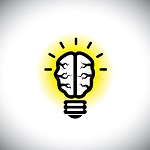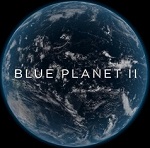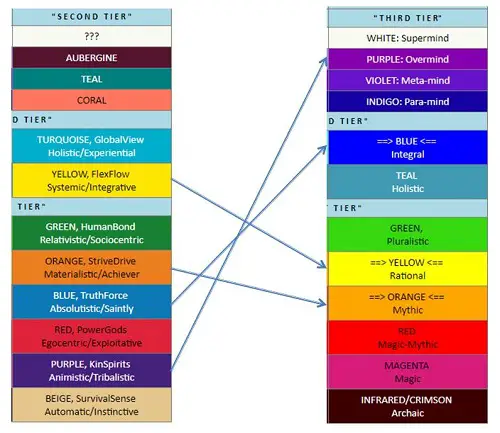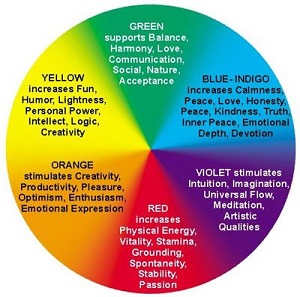|
TRANSLATE THIS ARTICLE
Integral World: Exploring Theories of Everything
An independent forum for a critical discussion of the integral philosophy of Ken Wilber
  Frank Visser, graduated as a psychologist of culture and religion, founded IntegralWorld in 1997. He worked as production manager for various publishing houses and as service manager for various internet companies and lives in Amsterdam. Books: Ken Wilber: Thought as Passion (SUNY, 2003), and The Corona Conspiracy: Combatting Disinformation about the Coronavirus (Kindle, 2020). Frank Visser, graduated as a psychologist of culture and religion, founded IntegralWorld in 1997. He worked as production manager for various publishing houses and as service manager for various internet companies and lives in Amsterdam. Books: Ken Wilber: Thought as Passion (SUNY, 2003), and The Corona Conspiracy: Combatting Disinformation about the Coronavirus (Kindle, 2020). ‘Yeah, but he got
| ||||||||||||||||||||||||||||||||||||||||||||||||||||||||||||||||
| INTEGRAL THEORY | SPIRAL DYNAMICS |
|---|---|
| " T H I R D T I E R" | " S E C O N D T I E R " |
| WHITE: Supermind | ??? |
| ULTRAVIOLET: Overmind | AUBERGINE |
| VIOLET: Meta-mind | TEAL |
| INDIGO: Para-mind | CORAL |
| " S E C O N D T I E R " | |
|
==> TURQUOISE <==
Integral |
TURQUOISE,
GlobalView
Holistic/Experiential |
|
TEAL
Holistic |
YELLOW, FlexFlow
Systemic/Integrative |
| " F I R S T T I E R " | |
|
==> GREEN <==
Pluralistic |
GREEN, HumanBond
Relativistic/Sociocentric |
|
==> ORANGE <==
Rational |
ORANGE, StriveDrive
Materialistic/Achiever |
|
AMBER
Mythic |
BLUE, TruthForce
Absolutistic/Saintly |
|
==> RED <==
Magic-Mythic |
RED, PowerGods
Egocentric/Exploitative |
|
MAGENTA
Magic |
PURPLE, KinSpirits
Animistic/Tribalistic |
|
INFRARED/CRIMSON
Archaic |
BEIGE, SurvivalSense
Automatic/Instinctive |
In "A More Adequate Spectrum of Colors?" I have argued that this re-coloring had some very unfortunate consequences. Since some elements of Spiral Dynamics were retained, but most were changed, a hybrid system arose which was neither true to Spiral Dynamics nor to the features of the light spectrum (or the tantric chakra tradition for that matter). If, as Wilber argued extensively in The Religion of Tomorrow, it is paramount to align the model with the colors of the rainbow, then use the colors of the rainbow, I would say. If not, don't bother.
I would therefore like to suggest the following improvements:
- Re-introduce YELLOW as a primary color. It fits naturally between GREEN and ORANGE. Spiral Dynamics used Orange to symbolize "the color of industrial age furnaces at work", but an argument can be made that Yellow fits the description of egoic-rationality better. In color psychology Yellow stands for "Intellectual Intelligence: Our rational and analytical ability to organize information. Logical thinking ability, problem solving, sequential organization, the ability to see inconsistencies, weigh opposites and make judgments." This is the most important change.
- ORANGE replaces the tertiary color AMBER and is moved one level downwards. As the color of mythic-rationality, it fits naturally between magic (RED) and reason (YELLOW). There is no reason anymore to resort to a tertiary color, now that Orange as secondary color can play this role. Again, color psychology tells us orange stands for "Social intelligence: The ability to associate and understand oneself in relationship to others. Leadership abilities, the ability to nurture relationships and maintain friendships, conflict resolution skills, and social analysis, the ability to understand other people." This fits perfectly with Wilber's "mythic-membership stage of development.

- Re-introduce BLUE as a primary color. It fits naturally between TEAL and INDIGO. Spiral Dynamics used Turquoise to symbolize "the color of earth seen from a meta-level". But isn't our planet equally well describe by the color Blue, since it is mostly covered by oceans? Not without reason the BCC named its earth documentary "The Blue Planet" (2001), which turned into the movie "Deep Blue" (2003) and got a sequal "The Blue Planet II" (2017). It is important to have at least the primary colors included. Turquoise is not even a tertiary color.
- The tertiary color TEAL can be preserved. It fits naturally between GREEN and BLUE, and as a hue of Green-Blue suggests the "beginning" of Blue (cf. "The Teal Altitude marks the beginning of an integral worldview, where pluralism and relativism are transcended and included into a more systematic whole.", Integral Life"). It is currently by far the most popular color in integral circles (cf. Teal Organizations Wiki and the "Teal Organizations Track" of the Integral European Conference 2018).
- The other color assignments seem fine to me: The pre-prepersonal stages of development are all characterized by shades of Red (RED, MAGENTA, INFRARED) and the post-integral transpersonal stages are all characterized by shades of INDIGO and VIOLET. PURPLE, as a secondary color, would fit on the highest colored rung. This feels quite natural and doesn't violate any rules from either color psychology or scientific color theory, as far as I can tell. They form the opposite ends of the color spectrum, as it ranges from infra-red to ultra-violet.

In the following table, the revised colors are marked up with arrows;
| INTEGRAL THEORY | SUGGESTED REVISIONS |
|---|---|
| " T H I R D T I E R" | " T H I R D T I E R" |
| WHITE: Supermind | WHITE: Supermind |
| ULTRAVIOLET: Overmind | ==> PURPLE: Overmind <== |
| VIOLET: Meta-mind | VIOLET: Meta-mind |
| INDIGO: Para-mind | INDIGO: Para-mind |
| " S E C O N D T I E R " | |
|
TURQUOISE
Integral |
==> BLUE <==
Integral |
|
TEAL
Holistic |
TEAL
Holistic |
| " F I R S T T I E R " | |
|
GREEN,
Pluralistic |
GREEN,
Pluralistic |
|
ORANGE
Rational |
==> YELLOW <==
Rational |
|
AMBER
Mythic |
==> ORANGE <==
Mythic |
|
RED
Magic-Mythic |
RED
Magic-Mythic |
|
MAGENTA
Magic |
MAGENTA
Magic |
|
INFRARED/CRIMSON
Archaic |
INFRARED/CRIMSON
Archaic |
To put the point I would like to make differently:
Wilber objected to Spiral Dynamics' placement of BLUE, YELLOW and PURPLE. But instead of relocating these colors in his own scheme to their proper levels, he abolished them altogether. BLUE became AMBER, YELLOW became TEAL, and PURPLE became MAGENTA. This resulted in a severely skewed and unbalanced model, with two of the three primary colors missing and the personal domains colored almost entirely with RED hues. Re-introducing BLUE, YELLOW and PURPLE restores this balance.
In the diagram below the major suggested revisions are graphically represented:

One can, of course, question Wilber's original argument that the color scheme should align itself with either the tantric tradition of the chakras, or the spectral colors of science. That presupposes relationships that still have to be proven separately. In the absence of such evidence, the color-psychological associations of Spiral Dynamics do not rely on any such speculations, and are intuitively and pragmatically understood. In the same spirit I have added YELLOW, BLUE and PURPLE, not because of any esoteric considerations but simply because they are important colors in the RYB color palette and for that reason alone can't be missed. They also have strong psychological connotations (see below).
Given the current popularity of Wilber's color scheme, I felt it clearly opportune to share my color-related deliberations. I don't harbour the illusion that my suggestion for updating Wilber's color scheme will be taken up by the integral community any time soon. Movements tend to defend their cherished notions—and this applies equally to the Spiral Dynamics community as to the integral movement and its offshoots. But as a sustained reflection on a large and influential part of integral culture I hope it has its merits.
One can also, of course, counter that in the end all colors are arbitrary, and are useful as long as we know what they stand for, but that overlooks the psychological effect they have on human beings.
To contrast these overly complicated color schemes, just have a look at this simple but effective color wheel below, taken from Pinterest, which uses only six colors in a balanced way, to express deep truths about human nature. It shows that RED and ORANGE cover the physical and emotional energies, YELLOW stands for "personal power, logic, intellect and creativity" and GREEN takes up "harmony, love and communication". In this presentation YELLOW has indeed received its rightful place in the scheme of things. Omitting such a primary color is simply unforgivable. And BLUE-INDIGO and VIOLET then quite naturally stand for more spirtual and transcendent capacities such as "inner peace, meditation and intuition". We all have this rainbow of colors inside us.
